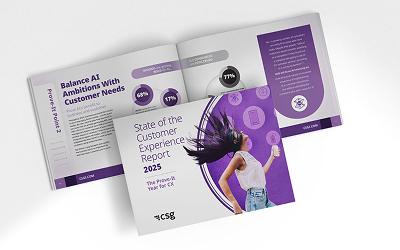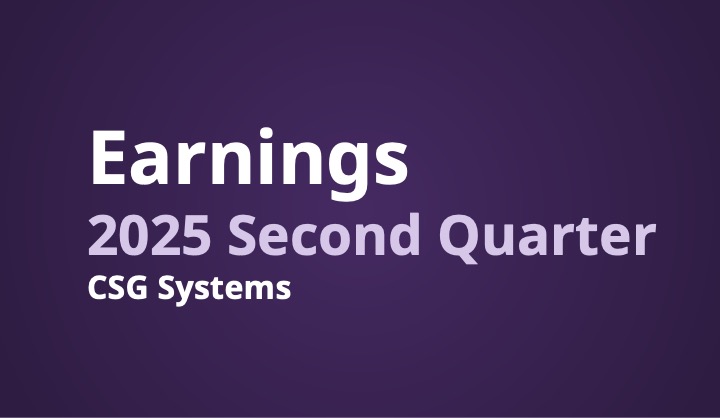Improving customer experience (CX) is a top priority for many businesses’ boards and leaders, who devote considerable money and resources to delight customers. According to a Forrester survey of 484 global CX leaders, 58% currently spend more than $2.5 million on CX initiatives and strategies. Despite that hefty investment, their CX initiatives aren’t always paying off. Of the CX leaders who are using a customer engagement solution (CES), less than half have experienced increases in customer retention (47%), customer satisfaction (41%), and sales (39%).
The majority of CX leaders (79%) are very or extremely likely to increase their investment in customer engagement solutions in the next year. As these leaders contemplate how to enhance CX, many must answer a tough question: Buy a CX solution—or build it internally?
With global enterprise software spending projected to grow 12.3% in 2023, it appears that many businesses are choosing to buy enterprise software rather than develop it themselves. This strategy allows internal IT teams to focus on aligned business outcomes.
7 Reasons to Partner with a CX Software Provider vs. Going In-House
1. Partnering with a customer experience solution vendor has a lower total cost of ownership.
Buying an off-the-shelf CX software system is often less expensive than developing one in-house. The cost of developing enterprise-level custom software, with in-house developers and designers, can range from $5 million to $10 million or more. Demand for IT talent is at an all-time high, increasing not just the costs of hiring qualified staff (and training them) to develop software, but also the costs of providing professional training and onboarding. Like building or renovating a house, IT projects often take longer and cost more than projected. In fact, Project Management Institute released a study revealing that only 57% of IT projects stayed within budget.
An enterprise-level CX software (such as a customer journey management solution) is complex and requires a high degree of functionality, scalability and customization. After the system is built, businesses must be prepared for additional and ongoing costs, including those associated with testing, fixing bugs, adding features and performing upgrades.
Depending on the industry, customer journey management software should:
- Include artificial intelligence (AI)-powered and real-time decisioning to create an emotional connection with customers at their time of need, regardless of channel.
- Utilize customer journey analytics to understand each customer’s interaction with your brand—across every channel, and device that a customer uses.
- Extend CX beyond customer acquisition to also focus on loyalty, retention, and long-term cost reduction.
- Contain a customer data platform that gathers and unifies data into real-time customer data profiles that power personalization.
- Provide a visual representation of all journey steps, allowing you to identify those that have the biggest impact on business goals and measure how journeys are performing against key performance indicators (KPIs).
- Integrate with legacy systems—customer relationship management (CRM), electronic health records (EHR), contact center software, etc.
- Comply with specific regulations (e.g., the Health Insurance Portability and Accountability Act (HIPAA) or Telephone Consumer Protection Act (TCPA).
CSG developed the award-winning customer journey management solution, CSG Xponent, with this core functionality in mind, including combining a customer data platform with best-in-class journey orchestration and journey analytics.
2. Expert-built solutions have lower risk.
Implementing a new software solution often carries some level of risk associated with adopting unfamiliar technologies. Customer journey management solutions do not require a “rip and replace” of old software. Having a CJM platform that integrates with existing CRMs, customer data platforms (CDPs), billing systems, contact center systems and internally built software reduces the need for training and the downtime associated with software implementation.
3. Software-as-a-Service provides faster speed to market with quicker time to value.
Developing new CX software internally can take months or even years. For example, training an AI solution can take more than six months. In contrast, by utilizing Xponent, CSG’s customer journey management solution, businesses can start deploying their most-impactful customer journey in as few as 90 days. Industry-specific, pre-built journeys outline everything required to operationalize a journey and kickstart implementation—eliminating 80% of scoping time and quickly delivering results. Using Xponent, companies start realizing return on investment (ROI) as soon as six months after implementation.
4. Software vendors require fewer resource demands.
Building software internally requires dedicated people, time, and computing resources. Many businesses don’t have the machine learning, natural language processing and AI specialists needed to develop a CX system. If an IT department is not dedicated solely to creating an internal software system, the team will be pulled in many directions and have limited time to devote to your project. Buying software allows internal IT departments to focus on the requirements and aligned business strategy of their applications rather than struggling with connectivity issues.
5. The vendor manages system maintenance and compliance.
Any software system needs consistent updates to implement new security measures and accommodate regulatory changes. Without enough software developers to oversee system maintenance, these updates can be delayed, frustrating users. Software vendors handle system maintenance, support, and updates, taking those time-consuming responsibilities off the IT team’s plate. CSG issues major updates quarterly, at no additional cost to our clients, in order to keep our software at the forefront of CX technology at no additional cost to our clients. At CSG, we take security seriously by performing regular comprehensive process audits and consistently monitoring local and regional requirements.
6. Built solutions can future-proof design.
CX software isn’t a “set it and forget it” solution. New functionality and capabilities must be added as business needs and technologies change. Often, in-house solutions are not extensible, causing data silos, incomplete information and lack of integration across departments. A scalable CX solution will accommodate future business growth, including flexible integration with new data sources, technologies, and channels that may emerge over time. As a proven customer engagement solution leader, CSG researches extensively to ensure that our CX solutions meet dynamic industry challenges and help customers stay ahead of their competition.
7. Software vendors can provide consulting and implementation guidance.
Developing and using CX software requires comprehensive understanding of customer journey mapping and the many factors (e.g., customer behaviors, preferences and needs) that impact CX. According to the Forrester study, 46% of CX leaders reported that a lack of internal expertise to implement and manage a customer engagement tool prevents them from investing in the technology. There is no one-size-fits-all approach to CX with guaranteed personalized, value-focused service, regardless of what stage your business is in. CSG’s CX experts/advisers are available to assist businesses with strategic planning and implementation.
When you purchase an off-the-shelf solution, the vendor is responsible for operating, managing, and maintaining the software, giving you more time to focus on strategic decisions and charting a course for success.
Take the first step with CSG Xponent Ignite
CSG Xponent Ignite, our customer experience solution, includes pre-built customer journeys for four industries: telecommunications, financial services, retail, and healthcare. The foundation of Xponent Ignite is CSG Xponent, our industry-leading, award-winning platform that includes a feature-rich and fully embedded customer data platform (CDP), customer journey orchestration and journey analytics to analyze customer behavior, sentiment and preferences and deliver a great customer experience.










